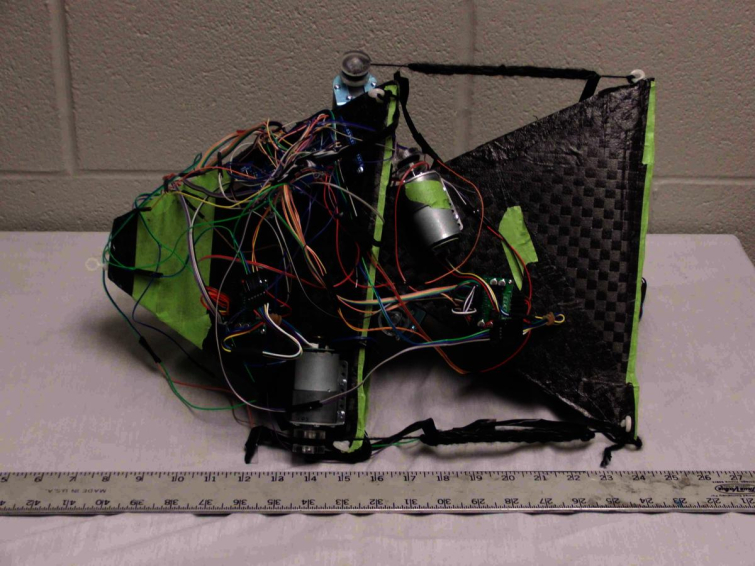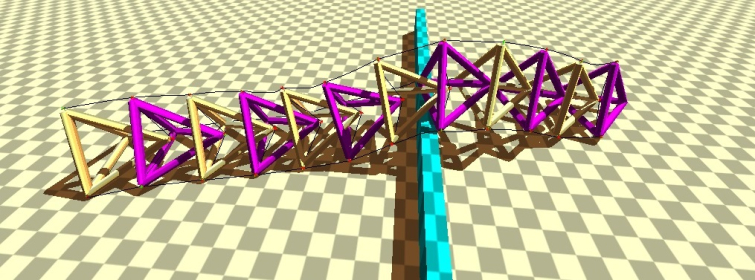Our two segment prototype of TetraSpine, using six DC motors and an Arduino.
TetraSpine is a tensegrity robot being developed in collaboration with NASA Ames Research Center. The goal is to explore an abstracted model of the spine for ground based locomotion. The robot features a series of tetrahedron shaped segments connected by three strings from the nose of one segment to the inside corners of the segment in front of it, and three more strings connecting the outside. Strings are controlled by a local impedance controller (described in Orki et al.) which convert a stiffness and damping gain into tensions in the string. Central pattern generators (CPGs) similar to those in Ijspeert et al. are used to generate a reference velocity, which produces a wave of motion through the structure. The motion can then be tuned and the robot steered by adjusting the parameters of the CPGs and impedance controllers. A twelve segment version of TetraSpine is simulated in the NASA Tensegrity Robotics Toolkit, and is pictured below climbing over a wall:
We are in the process of constructing a hardware implementation of TetraSpine. The tetrahedrons are made of carbon fiber, produced in the same facilities as MMALV. The six DC motors are controlled by an Arduino Microcontroller. Two segments have been constructed successfully, with a third under way.


